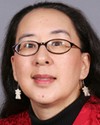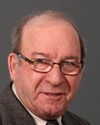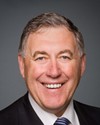Thank you very kindly.
The one figure I'm really looking for more explanation on, and I think we as the government are going to have to have some information on, of course, is the exponential growth--basically a 500% increase in the last 25 years, which is just unbelievable. Obviously we recognize some of the reasons, and birth rate is one. They are coming to a decision that they wish to be included in that particular demographic as aboriginal.
Do we have a breakdown as to the actual numbers of reasons as to why? What percentage is birth? What percentage might be due to a charter eligibility? What percentage might be due to judicial decisions on land claims? There are a number of reasons people might all of a sudden find it more fortuitous, more advantageous, more moral, more real--matrimonial property rights, and so on. Why do we have such a significant growth? As an example, does the population growth, the natural birth rate, account for 200,000 or 100,000 of that million-plus increase?
The reason I'd like to know is, where are we going with this? Are we on a pattern to continue this escalation at the same rate, with no sign of abatement? Or do we have a number of aboriginal people who are basically...? Have we topped out on those who wish to be included in that demographic? How do we as a government plan unless we know where we're going?
We need your help on this. What are your thoughts?




